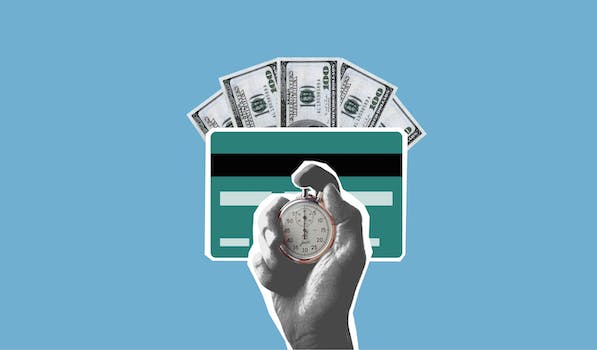How To Save More Money In Less Time
“Efficient tips for maximizing your savings.”
Introduction
Introduction: Saving money is an essential aspect of financial planning. However, it can be challenging to find the time and motivation to save. In this article, we will discuss some practical tips on how to save more money in less time. These tips will help you achieve your financial goals without sacrificing your time and energy.
5 Simple Ways to Cut Your Monthly Expenses
Saving money is a goal that many people have, but it can be difficult to know where to start. Fortunately, there are simple ways to cut your monthly expenses and save more money in less time. Here are five tips to help you get started.
1. Create a budget
The first step to saving money is to create a budget. This will help you see where your money is going and identify areas where you can cut back. Start by listing all of your monthly expenses, including rent or mortgage, utilities, groceries, and entertainment. Then, compare your expenses to your income to see if you are spending more than you earn. If you are, look for ways to reduce your expenses, such as cutting back on eating out or canceling subscriptions you don’t use.
2. Use coupons and discounts
Another way to save money is to use coupons and discounts. Many stores offer coupons and discounts on their products, and you can also find them online. Look for coupons and discounts on the products you regularly buy, and use them to save money on your purchases. You can also sign up for loyalty programs and rewards programs to earn points and discounts on your purchases.
3. Cut back on energy usage
Cutting back on your energy usage is another way to save money. Start by turning off lights and electronics when you’re not using them, and unplug appliances when they’re not in use. You can also lower your thermostat in the winter and raise it in the summer to save on heating and cooling costs. Additionally, consider switching to energy-efficient light bulbs and appliances to save even more money on your energy bills.
4. Shop around for insurance
Insurance is a necessary expense, but you may be able to save money by shopping around for the best rates. Start by comparing rates from different insurance companies for your car, home, and health insurance. You may be able to find a better deal by switching to a different provider. Additionally, consider raising your deductibles to lower your monthly premiums.
5. Cook at home
Eating out can be expensive, so consider cooking at home more often to save money. Start by planning your meals for the week and making a grocery list. Then, buy only the items on your list to avoid impulse purchases. You can also save money by buying in bulk and freezing leftovers for later. Additionally, consider packing your lunch for work instead of eating out.
In conclusion, saving money doesn’t have to be difficult. By creating a budget, using coupons and discounts, cutting back on energy usage, shopping around for insurance, and cooking at home, you can cut your monthly expenses and save more money in less time. Start by implementing one or two of these tips and gradually add more as you become more comfortable with your new habits. With a little effort, you can achieve your financial goals and enjoy a more secure financial future.
Maximizing Your Savings: Tips for Couponing and Discount Hunting

Saving money is a goal that many people have, but it can be difficult to achieve. Between bills, groceries, and other expenses, it can feel like there’s never enough money left over to put into savings. However, there are ways to maximize your savings and save more money in less time. One of the most effective ways to do this is through couponing and discount hunting.
Couponing is the practice of using coupons to save money on purchases. Coupons can be found in newspapers, magazines, and online. They offer discounts on a variety of products, from groceries to clothing to electronics. By using coupons, you can save a significant amount of money on your purchases.
To get started with couponing, you’ll need to gather coupons. You can do this by subscribing to newspapers and magazines that offer coupons, or by searching for coupons online. There are many websites that offer printable coupons, as well as coupon codes that can be used for online purchases.
Once you have your coupons, it’s important to organize them. You can use a coupon binder or a coupon app to keep track of your coupons. This will make it easier to find the coupons you need when you’re shopping.
When you’re shopping, be sure to check the store’s coupon policy. Some stores have restrictions on the use of coupons, such as limiting the number of coupons that can be used per transaction. Knowing the store’s policy will help you avoid any issues when you’re checking out.
In addition to couponing, you can also save money by hunting for discounts. Many stores offer discounts on certain products or during certain times of the year. For example, you may be able to find discounts on winter clothing at the end of the season, or on school supplies during back-to-school season.
To find discounts, keep an eye out for sales and clearance events. You can also sign up for email newsletters from your favorite stores, which may offer exclusive discounts to subscribers. Additionally, you can use apps and websites that track discounts and deals, such as RetailMeNot and Honey.
Another way to save money is by using cashback apps. These apps offer cashback on purchases made at certain stores or on certain products. For example, you may be able to earn cashback on groceries or on purchases made at a specific retailer. Some popular cashback apps include Ibotta and Rakuten.
When using cashback apps, be sure to read the terms and conditions carefully. Some apps may require you to make a minimum purchase or to submit a receipt in order to earn cashback. Additionally, be sure to link your credit or debit card to the app to ensure that you receive your cashback.
In conclusion, couponing and discount hunting are effective ways to save more money in less time. By using coupons, hunting for discounts, and using cashback apps, you can significantly reduce your expenses and increase your savings. With a little bit of effort and organization, you can make the most of your money and achieve your savings goals.
Investing for Beginners: How to Make Your Money Work for You
Saving money is a crucial aspect of financial stability. However, it can be challenging to save money, especially when you have bills to pay and other expenses to take care of. Fortunately, there are several ways to save more money in less time. In this article, we will discuss some tips on how to make your money work for you.
The first step to saving more money is to create a budget. A budget is a plan that helps you track your income and expenses. It allows you to see where your money is going and identify areas where you can cut back. To create a budget, you need to list all your sources of income and expenses. You can use a spreadsheet or a budgeting app to make the process easier.
Once you have created a budget, the next step is to reduce your expenses. Look for ways to cut back on your spending. For instance, you can reduce your utility bills by turning off lights and unplugging appliances when not in use. You can also save money on groceries by buying in bulk and cooking at home instead of eating out.
Another way to save more money is to automate your savings. Set up automatic transfers from your checking account to your savings account. This way, you won’t have to remember to save money every month. You can also set up automatic contributions to your retirement account. This will help you save for your future while reducing your taxable income.
Investing is another way to make your money work for you. Investing involves putting your money into assets that have the potential to grow in value over time. There are several types of investments, including stocks, bonds, and real estate. Before investing, it’s essential to do your research and understand the risks involved.
One of the easiest ways to start investing is through a robo-advisor. A robo-advisor is an online platform that uses algorithms to manage your investments. It’s a low-cost way to invest in a diversified portfolio of stocks and bonds. You can also choose to invest in individual stocks or mutual funds.
Another way to invest is through a retirement account. A 401(k) or IRA allows you to save for retirement while reducing your taxable income. These accounts offer tax benefits, such as tax-deferred growth and tax-free withdrawals in retirement.
Investing in real estate is another way to make your money work for you. Real estate investing involves buying and renting out properties or flipping houses for a profit. It’s a high-risk, high-reward investment strategy that requires a significant amount of capital and expertise.
In conclusion, saving more money in less time requires discipline and a plan. Creating a budget, reducing expenses, automating savings, and investing are all effective ways to make your money work for you. Remember to do your research and seek professional advice before investing. With the right strategy, you can achieve your financial goals and secure your future.
Creating a Budget That Works: Strategies for Sticking to Your Financial Goals
Saving money is a goal that many people have, but it can be difficult to achieve. Between bills, unexpected expenses, and the temptation to spend money on things we don’t need, it can feel like there’s never enough money left over to put into savings. However, with a little bit of planning and discipline, it is possible to save more money in less time. One of the most effective ways to do this is by creating a budget that works for you.
The first step in creating a budget is to determine your income and expenses. This means taking a close look at your paychecks, bills, and other regular expenses like groceries and transportation. Once you have a clear understanding of how much money is coming in and going out each month, you can start to make adjustments to your spending habits.
One strategy for sticking to your financial goals is to set a specific savings goal each month. This could be a percentage of your income or a specific dollar amount. Whatever your goal is, make sure it is realistic and achievable. Once you have set your goal, make a plan for how you will achieve it. This might mean cutting back on unnecessary expenses like eating out or buying new clothes, or finding ways to earn extra income.
Another strategy for sticking to your financial goals is to track your spending. This means keeping a record of every dollar you spend, whether it’s on bills, groceries, or entertainment. By tracking your spending, you can identify areas where you might be overspending and make adjustments accordingly. There are many apps and tools available that can help you track your spending, or you can simply use a spreadsheet or notebook.
One of the most important things to remember when creating a budget is to be flexible. Unexpected expenses will inevitably arise, and it’s important to have some wiggle room in your budget to accommodate them. This might mean setting aside a certain amount of money each month for emergencies, or simply being prepared to adjust your budget as needed.
Finally, it’s important to stay motivated and focused on your financial goals. Saving money can be challenging, but it’s also incredibly rewarding. Whether you’re saving for a down payment on a house, a dream vacation, or simply a rainy day fund, keeping your goals in mind can help you stay on track and avoid unnecessary spending.
In conclusion, creating a budget that works for you is one of the most effective ways to save more money in less time. By taking a close look at your income and expenses, setting realistic goals, tracking your spending, and staying flexible and motivated, you can achieve your financial goals and build a more secure future for yourself and your family. So why not start today? With a little bit of planning and discipline, you can be on your way to a brighter financial future in no time.
The Power of Automation: How to Save Money Without Even Thinking About It
Saving money can be a daunting task, especially when you have a lot of expenses to take care of. However, with the right approach, you can save more money in less time without even thinking about it. One of the most effective ways to do this is through automation.
Automation is the process of setting up systems that automatically handle certain tasks without any input from you. When it comes to saving money, automation can be a powerful tool that helps you save more money without even thinking about it. Here are some tips on how to use automation to save money:
1. Set up automatic transfers
One of the easiest ways to save money automatically is by setting up automatic transfers from your checking account to your savings account. You can set up a recurring transfer to happen on a specific day each month, so you don’t have to remember to do it yourself. This way, you can save money without even thinking about it.
2. Use budgeting apps
There are many budgeting apps available that can help you save money automatically. These apps can track your spending and help you identify areas where you can cut back. Some apps even have features that allow you to set up automatic savings plans, so you can save money without even thinking about it.
3. Sign up for automatic bill payments
Another way to save money automatically is by signing up for automatic bill payments. This way, you won’t have to worry about missing a payment and incurring late fees. You can also set up automatic payments for your credit card bills, so you can avoid interest charges.
4. Use cashback apps
Cashback apps are another great way to save money automatically. These apps give you cashback on your purchases, so you can save money without even thinking about it. Some apps even have features that allow you to set up automatic cashback rewards, so you can save money every time you make a purchase.
5. Set up automatic investments
Investing is a great way to grow your wealth over time, but it can be difficult to remember to invest regularly. That’s where automation comes in. You can set up automatic investments to happen on a regular basis, so you can save money without even thinking about it. This way, you can grow your wealth over time without having to do anything extra.
In conclusion, automation is a powerful tool that can help you save more money in less time without even thinking about it. By setting up automatic transfers, using budgeting apps, signing up for automatic bill payments, using cashback apps, and setting up automatic investments, you can save money effortlessly. So, if you want to save more money without putting in a lot of effort, consider using automation to your advantage.
Conclusion
Conclusion: To save more money in less time, it is important to create a budget, track expenses, reduce unnecessary spending, negotiate bills, automate savings, and invest wisely. By implementing these strategies, individuals can achieve their financial goals faster and with less stress.






